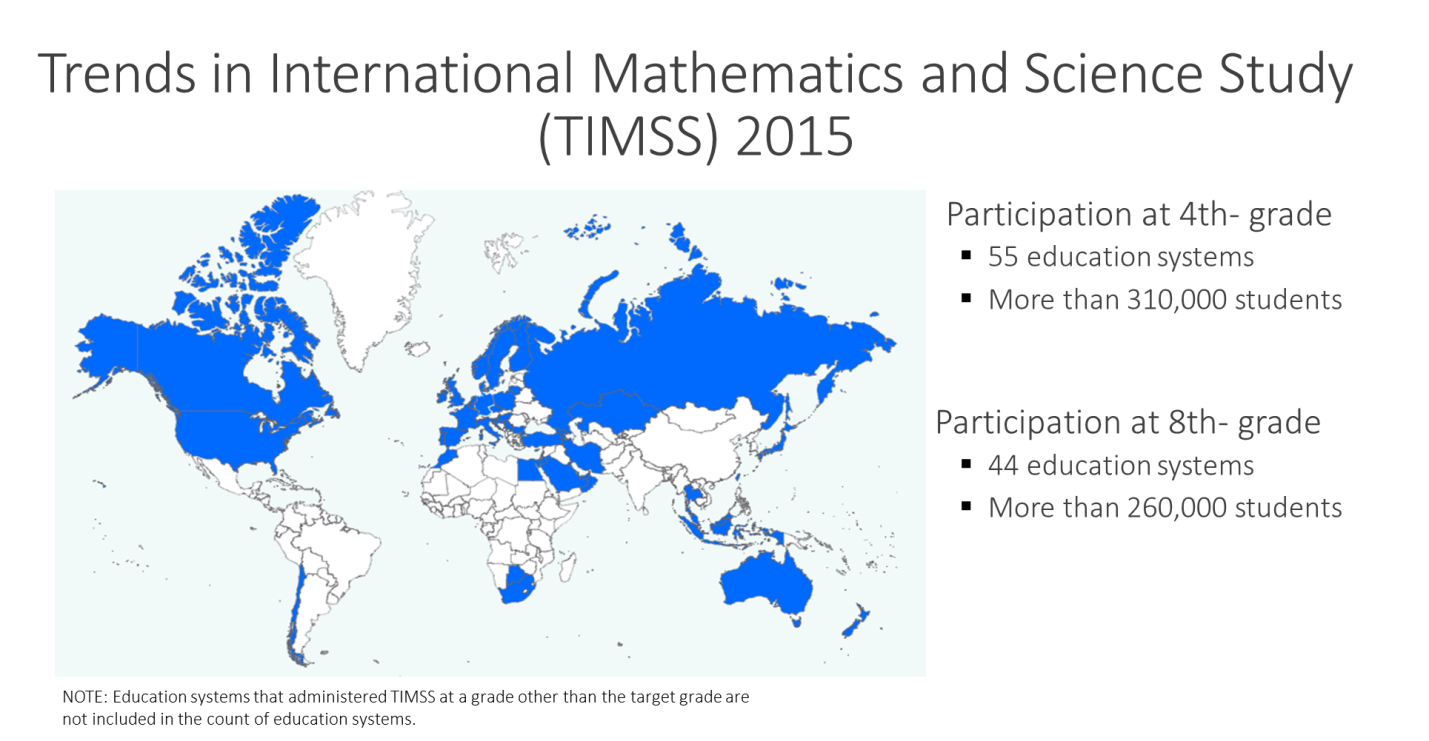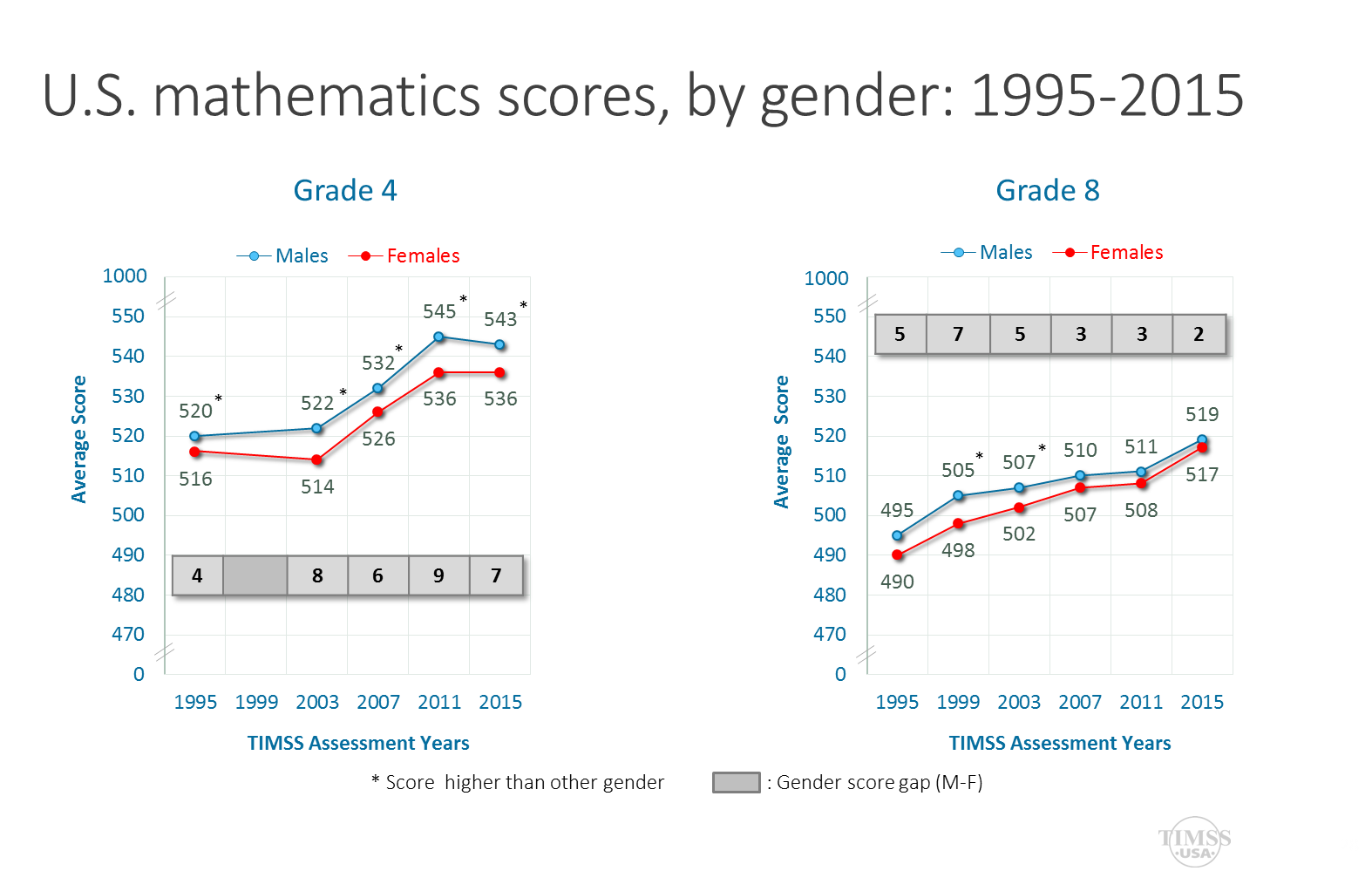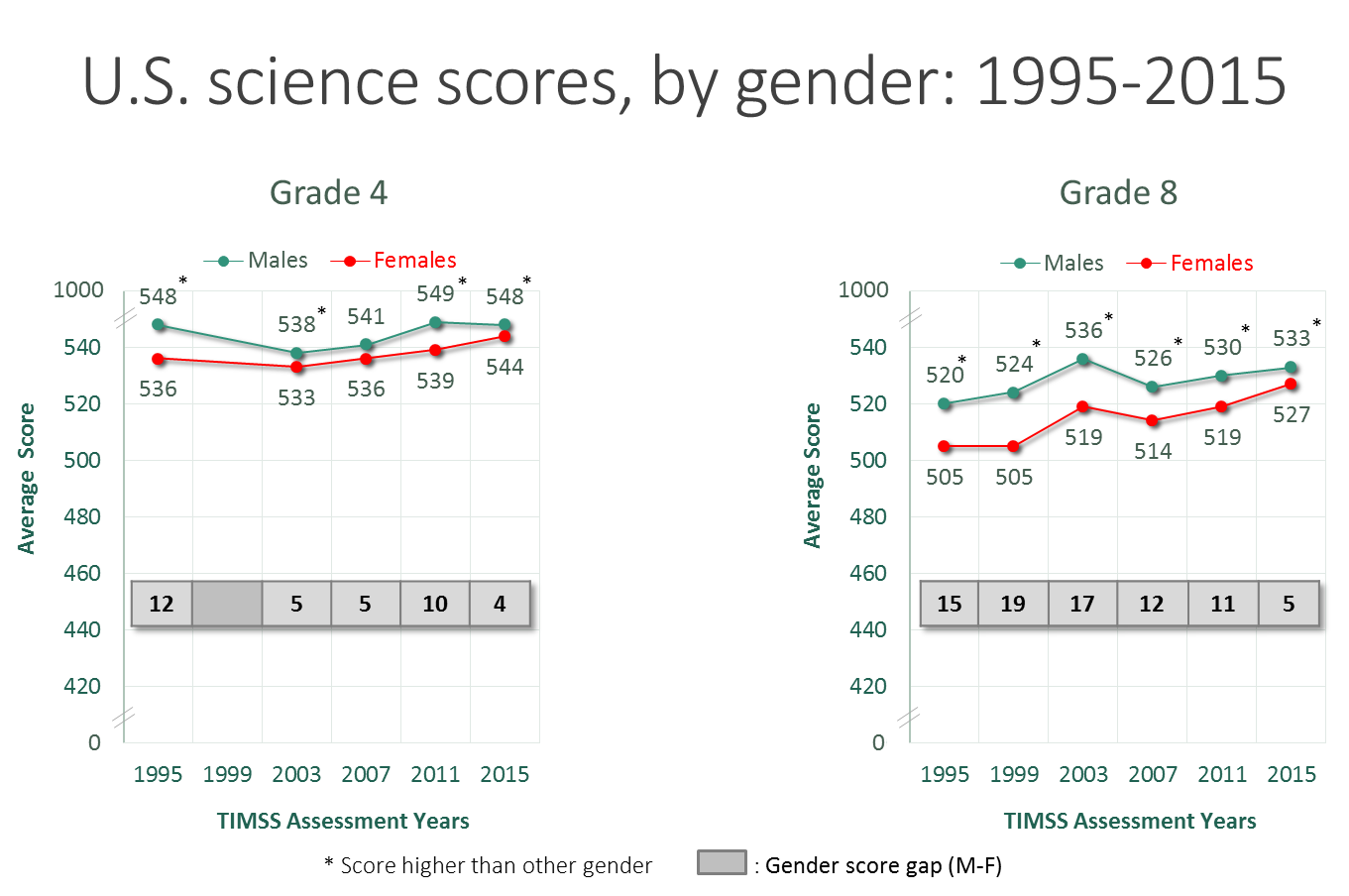How do U.S. students compare to their international peers? A look at the Trends in International Mathematics and Science Study at 4th and 8th-grade
By Lydia Malley
In today’s interconnected world, it is important to understand the skills of students in the U.S. relative to their international peers. To this end, NCES participates in a number of international assessments. Results from one of these assessments, the Trends in International Mathematics and Science Study (TIMSS), were released on November 29th. Our new report, Highlights from TIMSS and TIMSS Advanced 2015, compares the mathematics and science performance of U.S. fourth- and eighth-grade to that of their peers in over 60 countries or education systems across 6 continents. This report also presents results from TIMSS Advanced, which assessed the advanced mathematics and physics knowledge and skills of twelfth-graders in 9 countries. The results from TIMSS Advanced are discussed more in depth in another blog post.
TIMSS results show that the mathematic scores of U.S. fourth- and eighth-grade students have improved over time, while science scores have held relatively steady. TIMSS is designed to measure trends in mathematics and science achievement. Conducted every 4 years, TIMSS 2015 represents the sixth such study since TIMSS was first conducted in 1995.
Among the report’s key findings:
Fourth-grade mathematics:
- Fourth-grade mathematics performance in the United States has improved since 1995.
- Among 54 education systems that participated in the most recent TIMSS, average scores in 10 systems were higher than the U.S. average, 9 education systems were not measurably different from the U.S. average, and average scores in 34 systems were lower than the U.S. average.
Eighth-grade mathematics:
- The eighth-grade average mathematics score of the United States in 2015 was higher than in any prior administration of TIMSS, since the first administration in 1995.
- Among 43 education systems, average scores in 8 systems were higher than the U.S. average, 10 education systems were not measurably different from the U.S. average, and average scores in 24 systems were lower than the U.S. average.
Fourth-grade science:
- Fourth-grade science performance in the United States in 2015 was not measurably different from the performance in 1995 or 2011.
- Among 53 education systems that participated in the 2015 TIMSS, average scores in 7 systems were higher than the U.S. average, 7 education systems were not measurably different from the U.S. average, and average scores in 38 systems were lower than the U.S. average.
Eighth-grade science: U.S. eighth-graders’ average science score increased between 1995 and 2015, although the scores in the most recent years (2011 and 2015) were not measurably different.
- Among 43 education systems, in 2015 average scores in 7 systems were higher than the U.S. average, in 9 education systems the average scores were not measurably different from the U.S. average, and average scores in 26 systems were lower than the U.S. average.
Results by Gender:
- Males scored 7 points higher than females in fourth-grade mathematics, and eighth-grade mathematics scores for males and females were not measurably different.
- Males scored four points higher than females in fourth-grade science and five points higher in eighth-grade science.


TIMSS is designed to align broadly with mathematics and science curricula in the participating education systems and, therefore, to reflect students’ school-based learning. TIMSS also collects information about educational contexts (such as students’ schools and teachers) that may be related to students’ achievement.
The full report is available at https://nces.ed.gov/timss/. In addition, TIMSS results are now easier than ever to access, with more than 60 tables and figures, reports, detailed descriptions of the assessments, technical notes and more available on the TIMSS 2015 website, at https://nces.ed.gov/timss/results15.asp.
TIMSS and TIMSS Advanced are sponsored by the International Association for the Evaluation of Educational Achievement (IEA) and managed in the United States by the National Center for Education Statistics (NCES), part of the U.S. Department of Education.